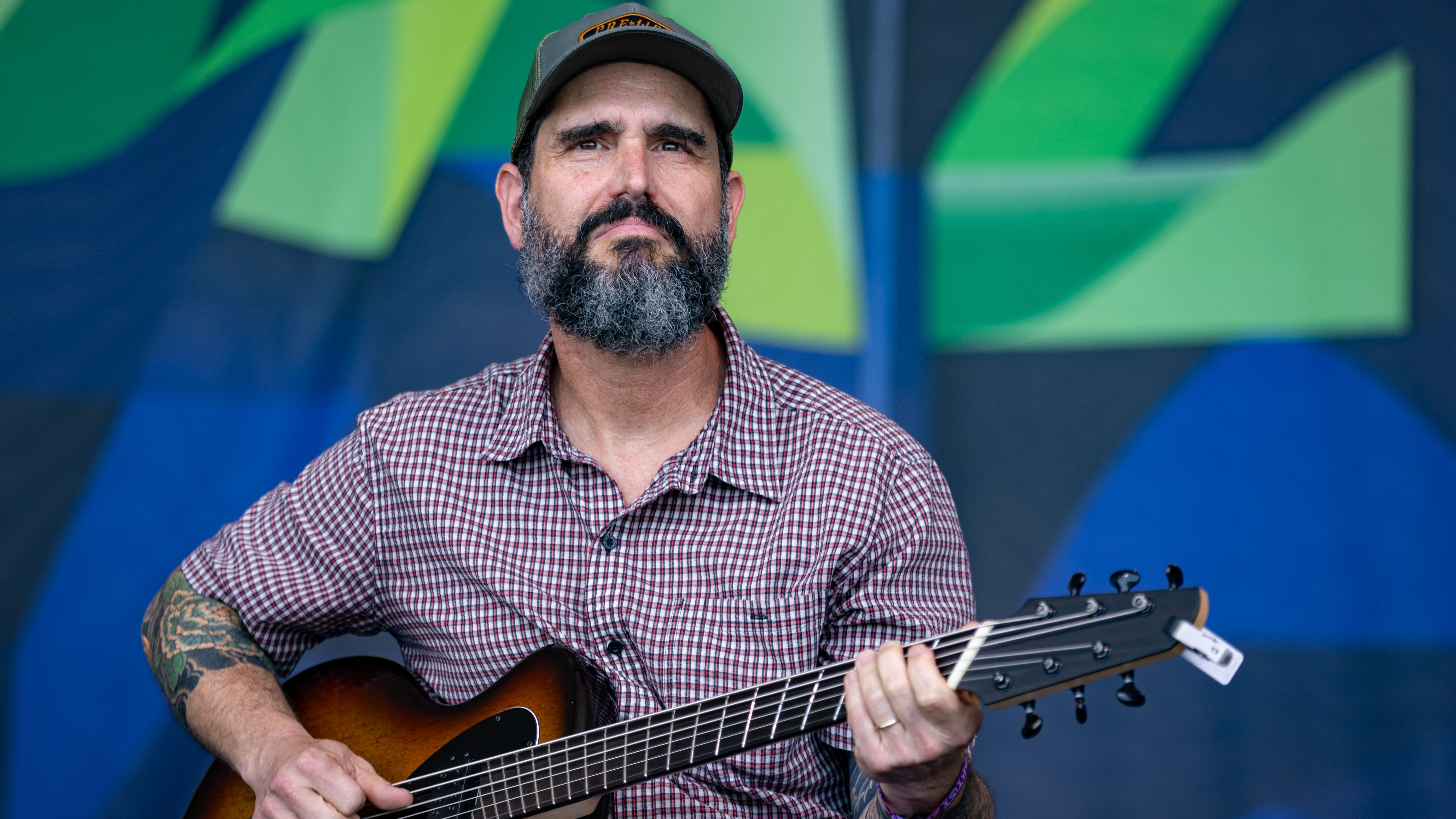Guitarist Charlie Hunter reflects on his work with D'Angelo on Voodoo in new interview: "Maybe it's better that I didn't have time to think of it beforehand because I probably would have been like, 'Woah! What Am I doing here!?'"

Charlie Hunter is a singular guitar player with a reputation that precedes him. But this new interview with Vertex Effects' Mason Marangella seems like the first time we've heard so much from the session and solo man about his work with D'Angelo on his seminal second album, Voodoo, which was released in January 2000
Indeed, a lot of listeners may not even realise that Hunter is the man that plays on the songs The Root and Spanish Joint, and that D'Angelo was already huge fan of his work when he tracked the guitarist down.
Wow, this guy is really a serious brainiac.
As Hunter reminds us, "content wasn't really a word" back then. Few people even had laptops at the time, let alone smartphones – and services like Spotify were a long way off. Which made the enigmatic artist born Michael Eugene Archer's extensive knowledge of his playing even more of a surprise. D'Angelo ended up seeing Hunter performing on a jazz music cable TV channel, and it piqued his interest. "I didn't have a ton of music out at that time… but I had a few records out on Blue Note and another record, but he literally had everything I put out. He had listened to everything too and was making comments on specific tracks and chord changes. I was like, 'Wow, this guy is really a serious brainiac…'"
At one point I think he asked if I would like to be in his band.
Voodoo came out in 2000 but Hunter's sessions at Electric Lady Studios alongside D'Angelo and musician Questlove (Ahmir K. Thompson) date back to 1997. He was 30 years old at the time, and things went so well he asked Hunter to join his touring outfit.
"At one point I think he asked if I would like to be in his band and I was really flattered but I had my own career going and I had all these people depending on me. I had to keep that going, so I didn't get that opportunity. I guess I passed on it."
The influence of the D'Angelo-produced Voodoo and its successful blending of neo-soul, jazz, funk and R&B has continued to grow. But for Hunter, there wasn't time to dwell on it: "I don't mean that in a blase way and those [musicians] were incredible, and definitely kicked my butt around the block a few times for sure," he reflects with Mangella in the video above. "And it was a great experience to get to be in their universe for a few days – [I] learned a lot, but late 20s / early 30s you're just so busy all the time. Everything is by the seat of your pants.
"Maybe I went straight into the studio on two hours of sleep – probably, you never know. You're always boom, boom, boom because that's the tempo that you have to go at. Maybe it's better that I didn't have time to think of it beforehand because I probably would have been like, 'Woah! What Am I doing here!?'"
Want all the hottest music and gear news, reviews, deals, features and more, direct to your inbox? Sign up here.
"Ahmir was in a little drum booth," remembers Hunter later. "And I remember we had to keep taking breaks because there was no ventilation in there." Spanish Joint was done within a couple of takes at most with Hunter using a custom-made eight-string Novax guitar through the studio's '70s Fender Twin. As you'll see in the video above – Hunter's advanced signature technique means he's able to the play bass and melodic parts simultaneously on his six-string fan-fret Novax guitar made by Ralph Novak. Incredible.
Then later on this record came out and a friend of mine said, 'Man, they really messed your s*** up on that record'.
Hunter came up with the part that birthed The Root. But the end result was quite different. "D'Angelo was really into what later people would understand to be J Dilla's innovations in how he used time [non-standard quantization] and how he got there. But he was like, 'Hey man, can you play this super behind the beat?' And I said, 'I can try and get there.' So what we did was straight up, how I [am playing it in the video]. Then later on this record came out and a friend of mine said, 'Man – and he used more colourful language – they really messed your s*** up on that record, you should hear it, it sounds terrible, man. I would be mad if I were you.'"
That said, Hunter himself doesn't mind that his guitar work was "pulled back a bit" in relation to Questlove's drums. But Marangella has a lot more back catalogue to discuss with Hunter when it comes to his work – including John Mayer's In Repair, an extremely unusual composition for the songwriter in that Hunter actually composed the bridge part and not Mayer. Amusingly, he hadn't ever heard the final recording until Mangella played it for him on camera!
Check out the full interview above.

Rob is the Reviews Editor for GuitarWorld.com and MusicRadar guitars, so spends most of his waking hours (and beyond) thinking about and trying the latest gear while making sure our reviews team is giving you thorough and honest tests of it. He's worked for guitar mags and sites as a writer and editor for nearly 20 years but still winces at the thought of restringing anything with a Floyd Rose.